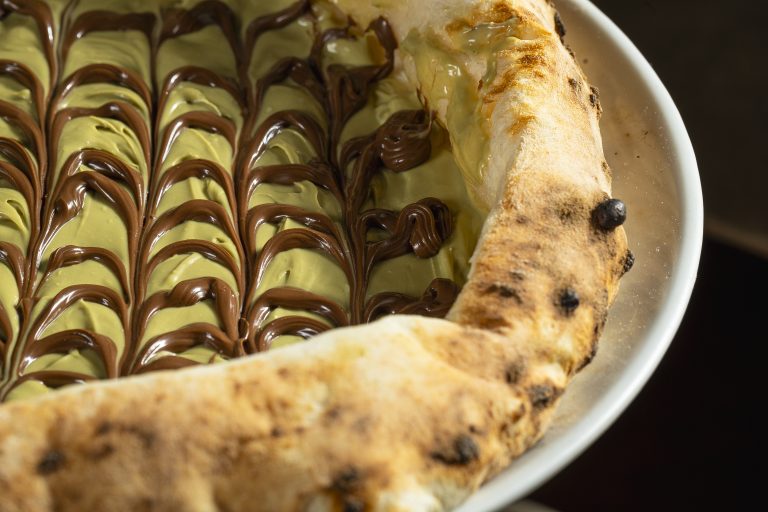São Paulo – There was a time when Brazilians only heard about pistachios in ice cream shops. And that greenish ice cream actually contained very little of the product, being mostly essence and coloring. Only a few consumed the nut in its natural form but in moderation due to its high price. Since Easter 2023, when major brands launched pistachio-filled Easter eggs and the trend went viral on TikTok, the product has become a favorite among Brazilians, who now consume it not only in sweets but also in savory dishes.
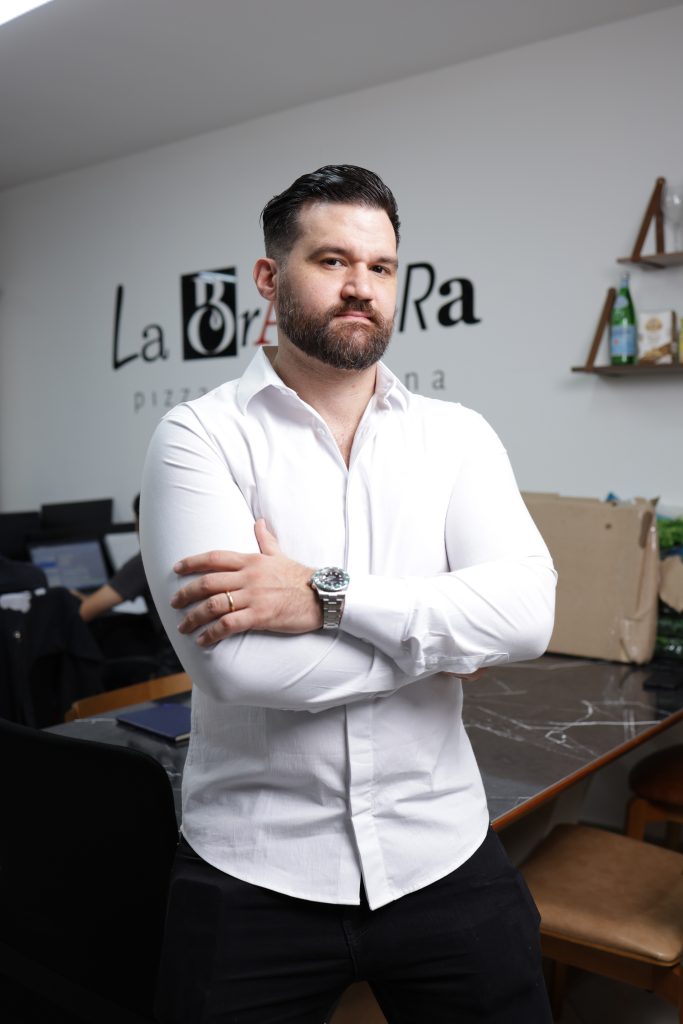
Some still call it a trend, or the “pistachio hype,” but those who added it to their menu say that, nearly two years later, the demand remains strong, and regardless of the final price to the consumer, the products are a success. This is the case with the pistachio pizza with Nutella at La Braciera, a pizzeria with five locations in São Paulo. Even priced at BRL 82 (USD 13) and serving four people, it is one of the most popular pizzas on the menu.
“The pizza is made with pistachio ganache, white chocolate, and Nutella. We performed several tests, and since it’s made from two products from nuts that are very beloved by Italians, we came up with a harmonious and delicious flavor,” says Gustavo Brunello, partner and CMO of La Braciera.
“It really is a huge success in sales and on social media due to the pistachio hype, which has caught on with Brazilians, but also because of the quality of the ingredients, as we use Italian pistachio cream and not flavored products.” The success is so great that soon the chain will soon launch a calzone filled with pistachio ganache and red fruits.
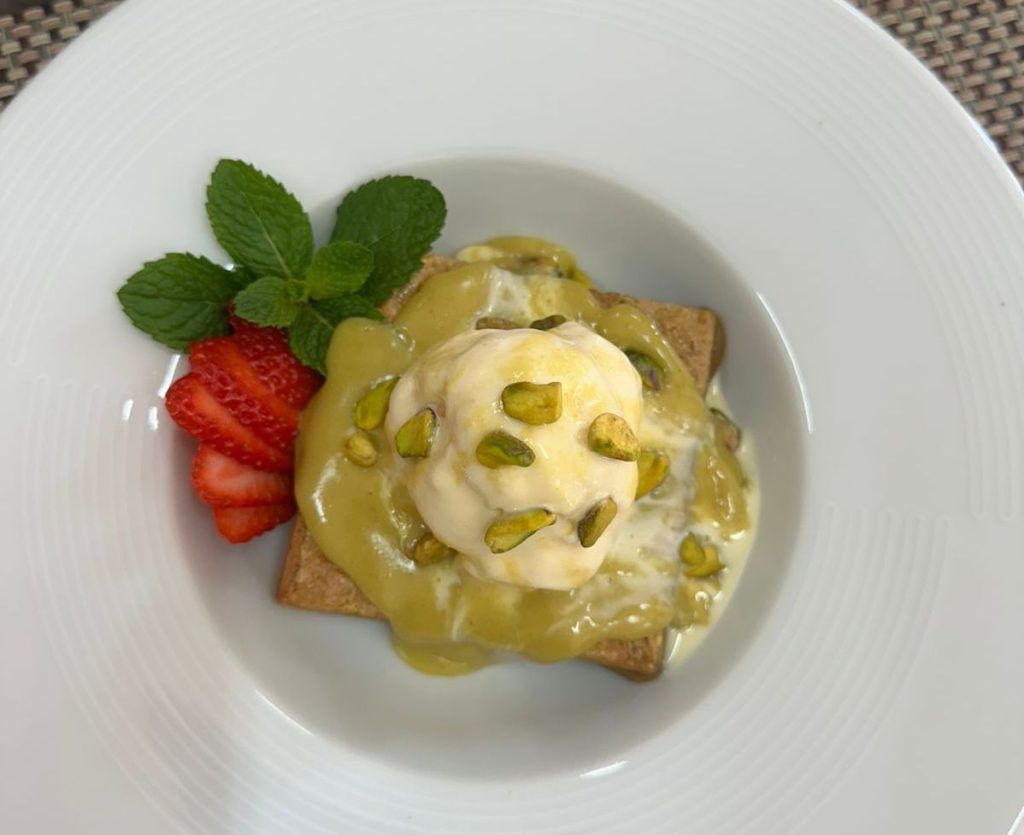
Rodrigo Polachini, owner of Senhor Espresso, a café chain from São Paulo state, headquartered in São José do Rio Pardo, confirms the growing demand for pistachio-based novelties. His sweet shelf, once filled with creams and chocolates, started to acquire an increasingly greenish hue. Pistachio began to appear in cakes, brigadeiros, cream puffs, cheesecakes, éclairs, and even in cappuccinos. Even though he pays a fortune for the nuts, importing them from California at around BRL 300 (USD 49) per kilo, customers are willing to pay the final price for his sweets with satisfaction.
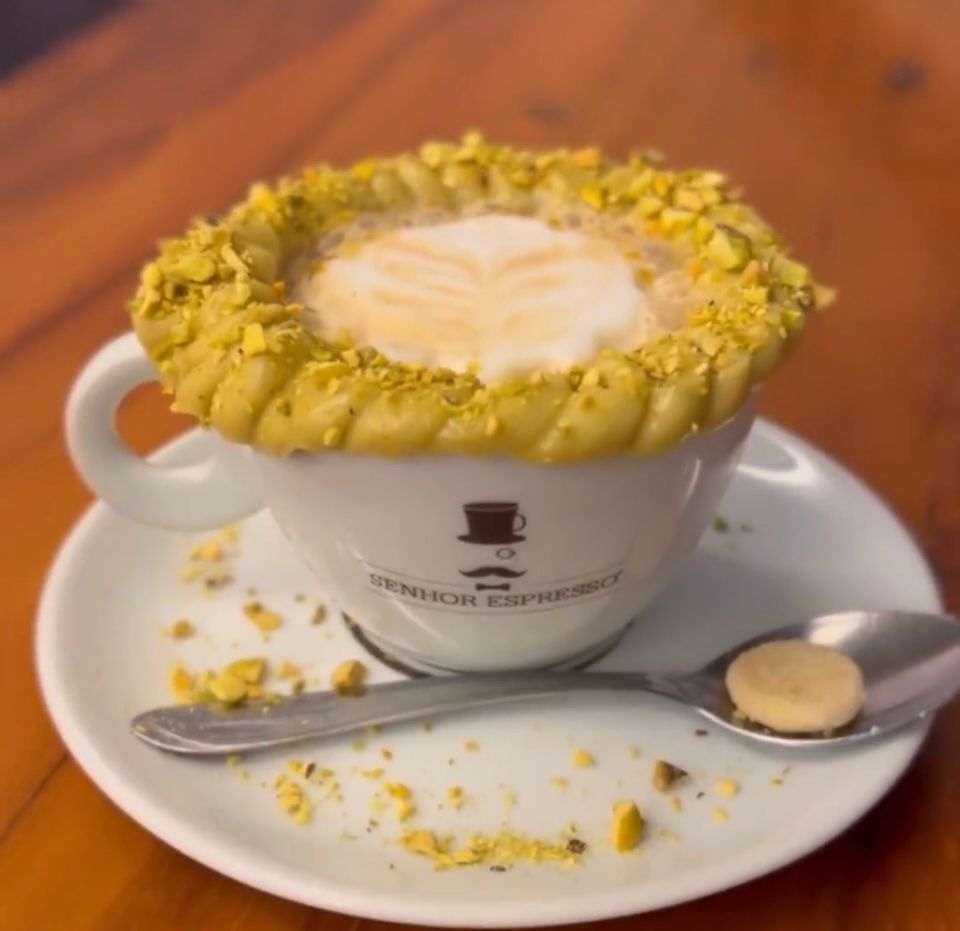
“Senhor Espresso was founded in 2015, and we’ve been using pistachios for only a year, driven by the global boom that started in 2023. It’s a success—it’s become our top-selling product,” says Polachini, a coffee specialist. He personally roasts the pistachios and makes his own paste, ensuring the quality of his products. Recently, the café even launched a sandwich featuring pistachio labneh, an invention by his friend, award-winning chef Jefferson Rueda.
Dubai chocolate, US pistachio
Another product that has kept pistachios trending in Brazil is the internationally acclaimed Dubai chocolate. Launched in 2021 by Fix Dessert Chocolatier from the United Arab Emirates, the bar is filled with a rich pistachio cream, tahini, and kadayif, a traditional dough used in Arabic sweets.
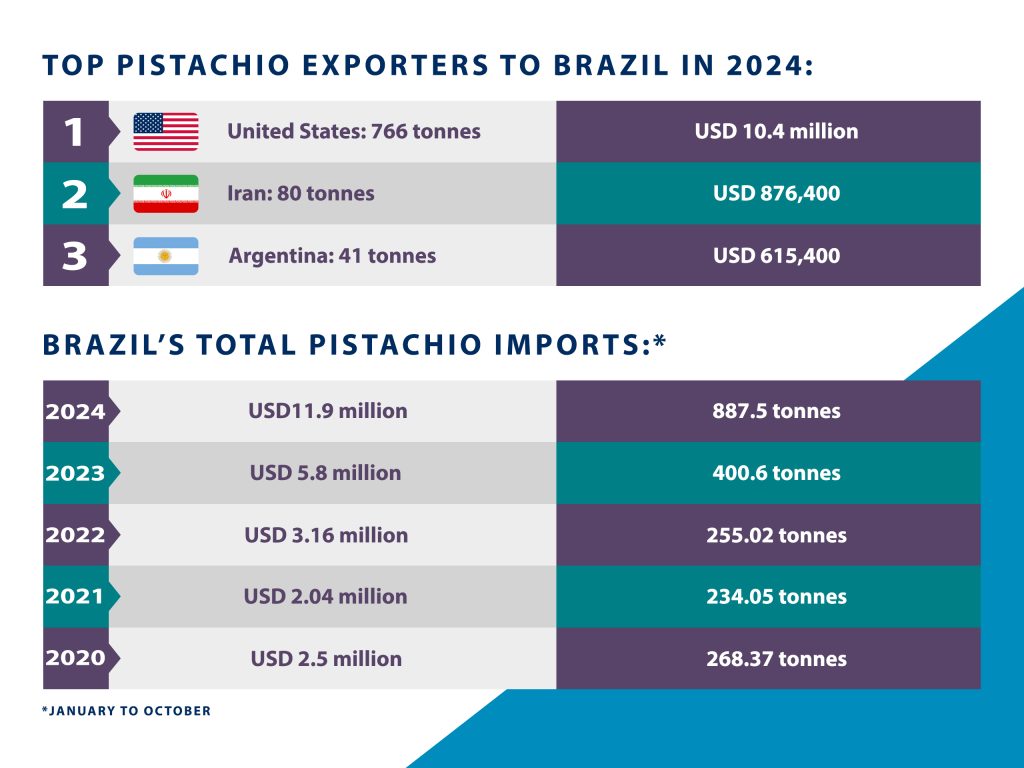
The success was so tremendous that shortly afterward Swiss brand Lindt created its own version—a 150-gram bar costing around EUR 15 (USD 16). However, it was only at the end of 2024 that it began being sold in Brazil, where the price can exceed BRL 600 (USD 97) for a bar of just over 1 kilogram.
The growing popularity of the product can also be measured by import statistics. In 2020, Brazil imported 268.37 tonnes of pistachios, totaling USD 2.5 million—in 2024, imports reached 887.5 tonnes, amounting to USD 11.9 million (volume measured from January to October). Such a significant market has already prompted plans for testing local production in Brazil, specifically in the Northeast region, according to regional media reports.
For now, however, the United States remains the largest exporter to Brazil. Pistachios have been widely used in US cuisine for much longer, as it is in Italy. Iran ranks as the second largest pistachio exporter to Brazil, followed by neighboring Argentina. The UAE and Lebanon were once significant exporters to Brazil, but they didn’t sell it to the Latin American giant in the past two years.
Pistachios in Battaglia’s hands
Chef Nasrin Haddad Battaglia, an Iranian who moved to Brazil in 1990, has made pistachios a star ingredient in her cuisine. In 1998, Battaglia opened the restaurant Amigo do Rei in Paraty, naming it after a poem by Manuel Bandeira. Before moving to Brazil, she used to guide Brazilian tourists through the ruins of Pasargadae, an archaeological site in Iran that inspired a famous poem by Bandeira. The restaurant was later relocated to Belo Horizonte. Now living in São Paulo, she hosts private dinners in her home with custom menus, available by reservation only.
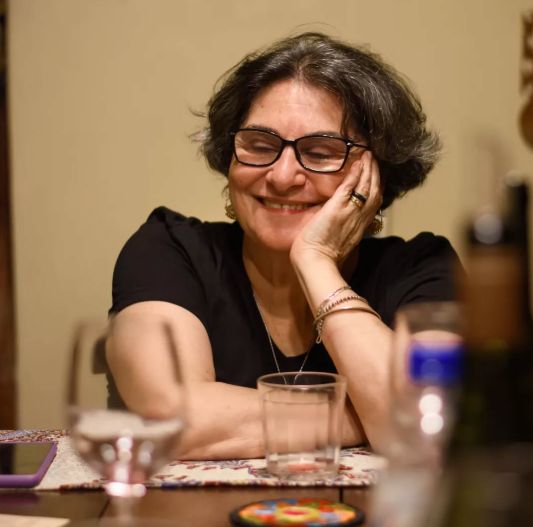
“In Iran, pistachios aren’t primarily associated with sweets. In fact, it’s very common to eat roasted and salted pistachios. In Iranian cuisine, they appear in soups, stews, cakes, and as toppings for desserts. They’re also sometimes used in rice dishes, sliced into strips, as in Javaher Polo (Jeweled Rice). In strips, they serve a more decorative purpose, while when crushed, they act as a flavor enhancer,” explains Battaglia, who worked in catering while living in Tehran.
Her recipes are rooted in traditional Iranian cuisine, “but of course every family has its own secrets and cooking styles.” Pistachio soup is one of the dishes the chef serves at her private dinners. Her vibrant green nuts are imported from Iran.
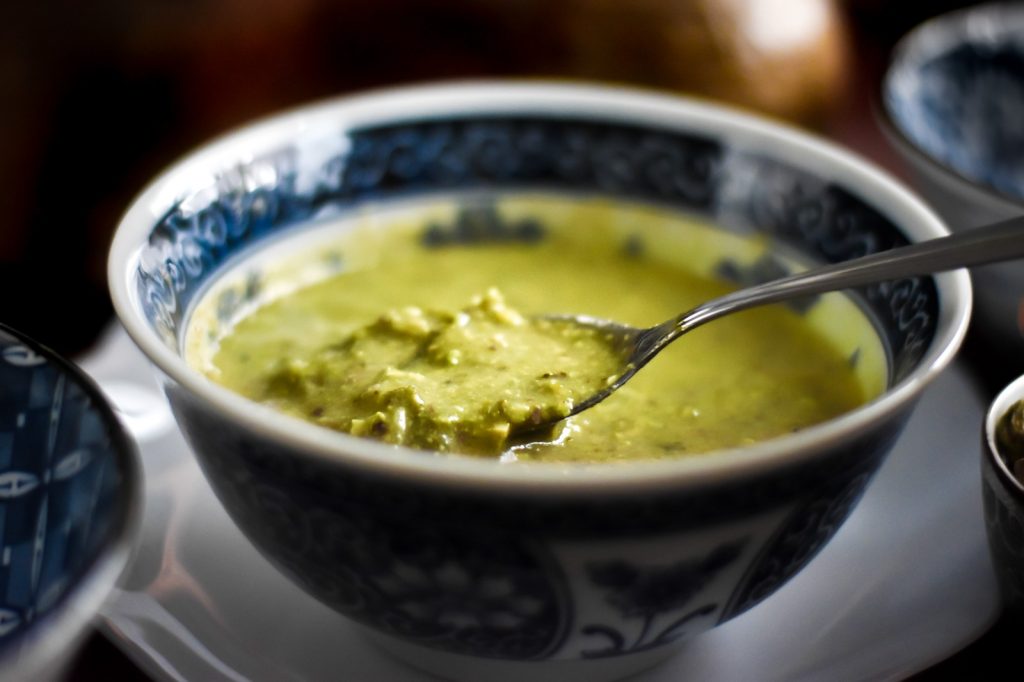
It is one of the oldest nuts in the world, and the Persians considered it a symbol of wealth and prosperity. “In fact, pistachio holds great importance in Iranian life, not only in cuisine. It should never be missing from the appetizer table that all Iranians set up when hosting parties at home,” she says.
Quick facts:
La Braciera
@labracierapizza
Senhor Espresso
@senhorespresso
Amigo do Rei
@amigo_do_rei
www.amigodorei.com.br
Reservations at +55 (11) 98194-8190
Read more:
Camel milk to reach Brazilian consumers
Report by Débora Rubin, in collaboration with ANBA.
Translated by Guilherme Miranda



